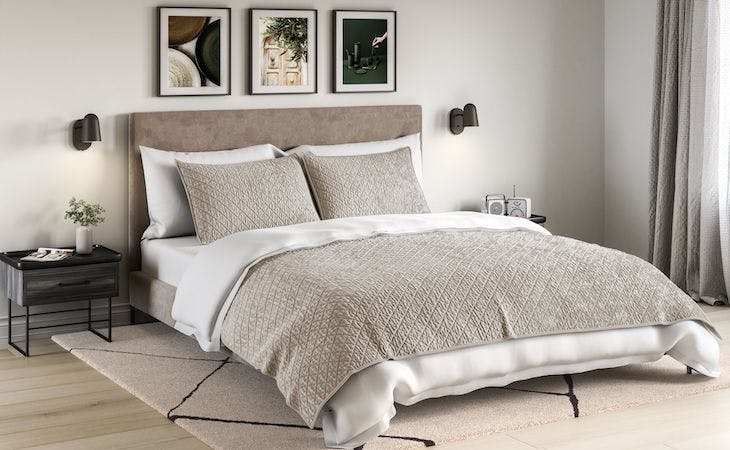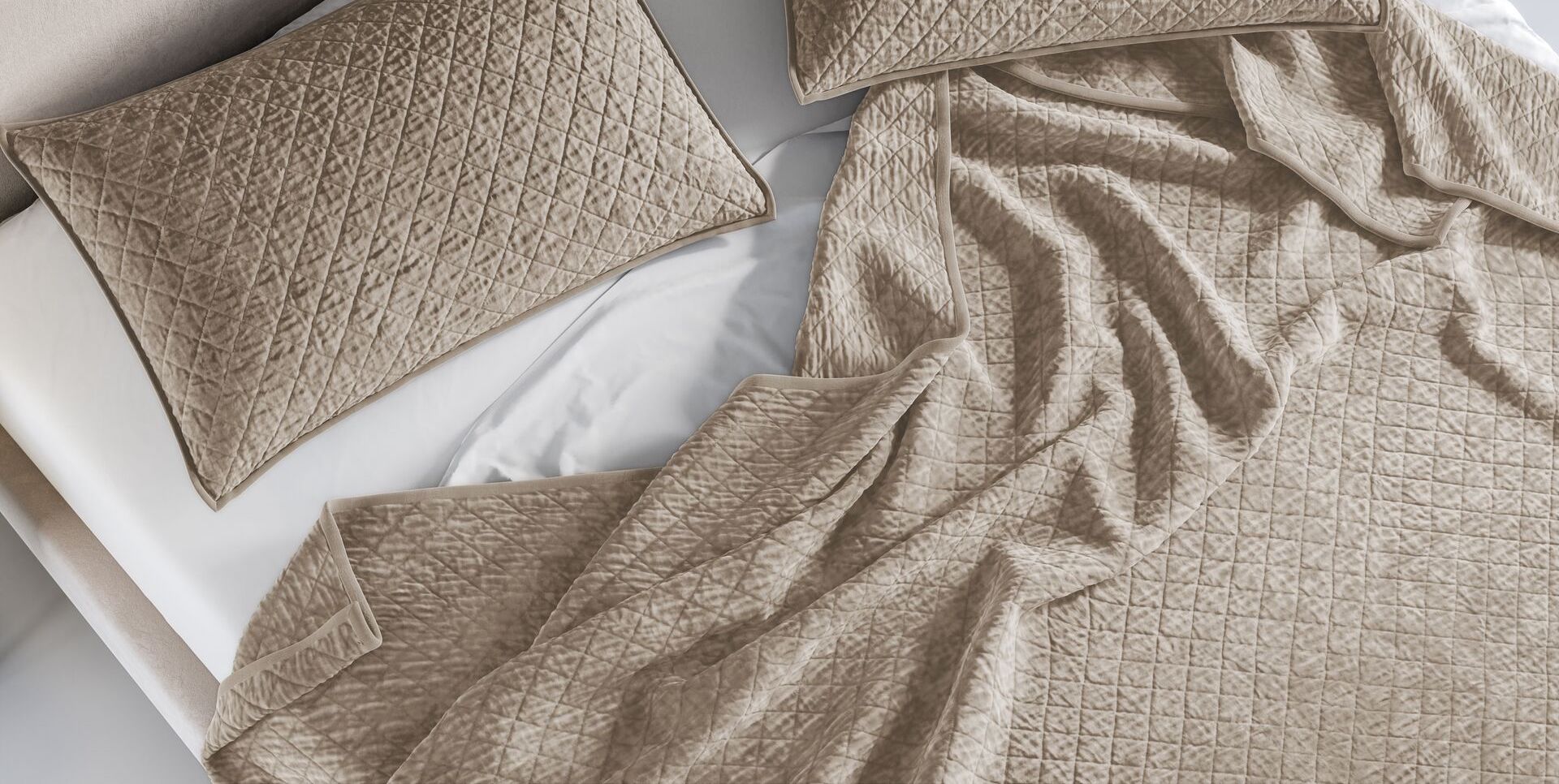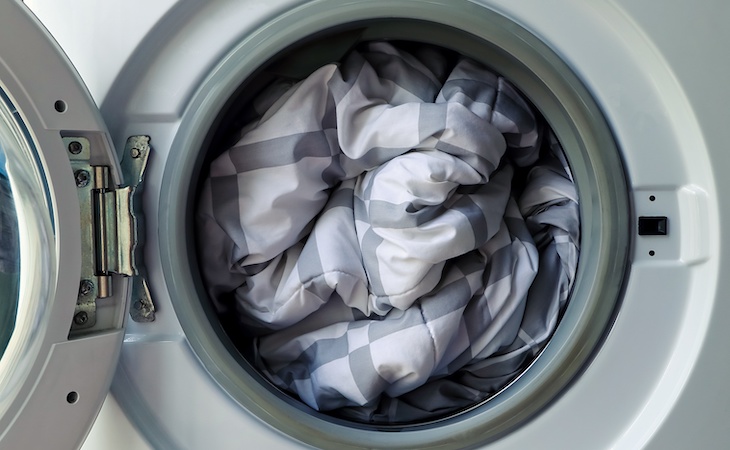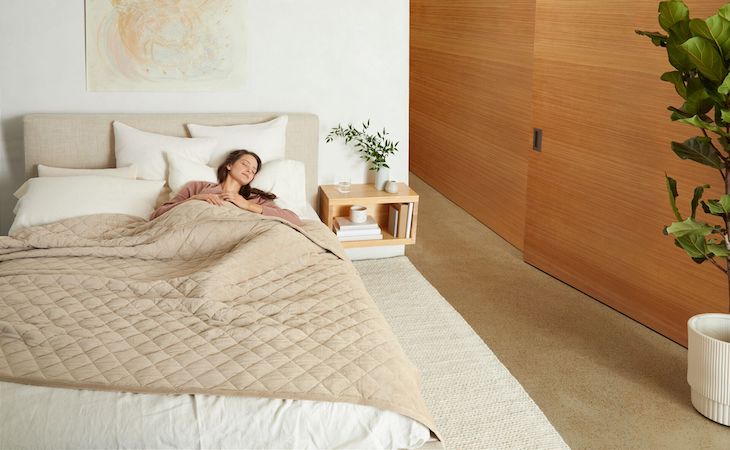A lot goes into choosing the upper layer of bedding, which is sometimes called a blanket or bed cover. You want it to be the perfect warmth level for both the winter and summer months and possibly also match the decor of your bedroom so it can double as a bedspread.
Two popular upper layer options are comforters and quilts. While both of these are great options, it’s a good idea to learn about the key differences between them so you can select the one that’s best for you and your sleeping style.
Here, we’ll go into detail about the key differences between comforters and quilts so you can find your perfect match.
What is a comforter?
A comforter is essentially a huge fabric bag filled with stuffing. The stuffing can be down, wool, silk, cotton, or synthetic fibers, with down comforters or down alternative comforters being the most common.
Different types of stuffing have different advantages.
For instance, down makes a cozy and fluffy comforter that provides the most warmth as it tends to trap heat. (Down feathers are a layer of feathers closest to a duck or goose’s skin and provide insulation to keep the bird warm.) However, down comforters might not be ideal for people who tend to sleep hot.
Keep in mind that there are two types of comforters: sewn-through comforters and baffle-box comforters. With a sewn-through comforter, the two large pieces of fabrics are sewn together, creating pockets that hold the fill.
With a baffle-box comforter, a thin strip of fabric is sewn between the two covers, creating a three-dimensional box that more evenly distributes the fill. Generally, baffle-box comforters tend to be warmer and fluffier than sewn-through comforters.
In general, comforters are a great option for colder nights or for sleepers who like to have something fluffier and more substantial to cover themselves with than a thin blanket or quilt.
Another advantage of comforters is that they’re warm enough to be used without a top sheet or any other bottom layers. This is a benefit for those who don’t want to spend too much time making their bed in the morning.
What is a quilt?
A quilt is a thin quilted blanket. Traditionally, quilting was a type of craft that was done entirely by hand. A traditional quilt consists of three layers.
The top layer is a collection of different pieces of fabric stitched together to create an artistic pattern. The bottom layer of a quilt is a single sheet of fabric. In between the top layer of patchwork and the bottom layer, there’s a thin layer of batting consisting of wool, down, or synthetic fibers to provide some insulation and warmth.
While handmade patchwork quilts can still be found today, most quilts on the market are machine-sewn, made of two large different pieces of fabric with the pattern sometimes printed onto the fabric at a later stage.
Most often made of cotton or cotton blends, quilts are thinner and lighter than comforters, so they don’t trap heat. They’re better suited for summer months, hot sleepers, or places with very mild winters.
Quilts are also a great option if you want to achieve a layered look with your bedding as they tend to need multiple layers of blankets and bed sheets to be warm enough to sleep under (especially in the winter months).
Main differences between comforters and quilts
Comforters and quilts are great options—but there are some key differences between the two. Aside from the main differences like construction and warmth level, there are additional points to keep in mind before making a decision to buy a comforter vs. quilt.
For example, comforters have a cozier look and feel, while quilts are more traditional in style. Comforters also tend to be slightly lower maintenance to care for than quilts.
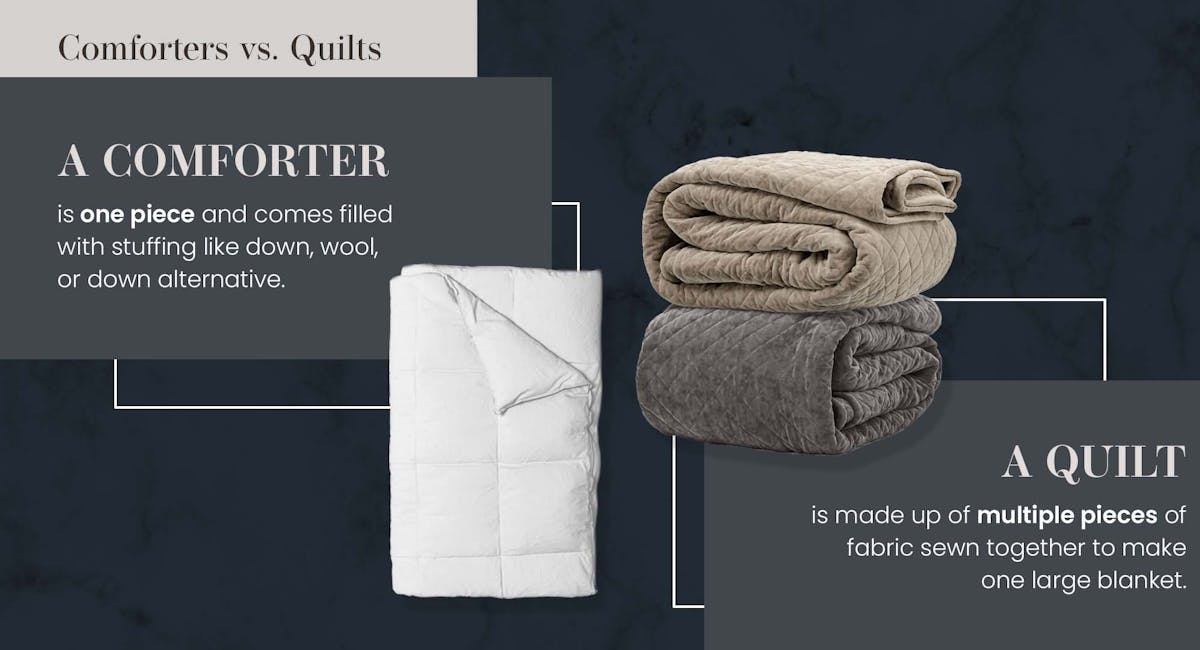
The most common differences between comforters and quilts include:
- Style
- Maintenance level
- Price
Style
Quilts and comforters will give a very different look to your bedroom. Quilts have a more classic and traditional style as they typically need additional layers of fabric underneath.
Additionally, they usually come with more eclectic designs, though you can find them in solid colors as well.
Comforters, on the other hand, give off a more homey and cozy style and add more height to your bed because of how fluffy they are. This is especially true of baffle box comforters that have more loft.
Maintenance level
Both comforters and quilts can be fairly tricky to maintain. Most comforters can be washed in the washing machine, though some may require dry cleaning.
Always check the manufacturer’s instructions before washing your comforter. If it can be put in the wash, throwing some tennis balls into the washing machine can help reduce feather clumping.
As with comforters, follow the manufacturer’s instructions when it comes to washing quilts. Keep in mind that while many quilts can be put in the washing machine, some delicate and handmade quilts need to be hand-washed because the washing machine may cause the seams to fray.
Generally, if you’re looking for a lower maintenance option, a comforter is likely the way to go.
Price
Comforters and quilts can come at a variety of different price points. One may suit your budget better than the other.
On average, comforters tend to cost anywhere between $50 to a few hundred dollars. The same goes for machine-sewn quilts.
However, handmade patchwork quilts can become increasingly more expensive because there’s a lot of labor that goes into making them. Instead of using a single piece of fabric, hand-sewn quilts are patched together individually.
While you may be able to find secondhand or vintage quilts for a lower price, most handmade quilts will cost anywhere between $100 to $1,500.
Other types of bedding alternatives
If neither comforters nor quilts seem like the ideal option for you, there are other types of bedding on the market. Some of the top alternative types of bedding include blankets and duvets.
Duvets
Duvets are similar to comforters in that they’re huge fabric bags filled with stuffing. However, duvets are usually white rather than patterned and are typically used with a duvet cover for hygienic purposes. Because of that, duvets are sometimes referred to as duvet inserts.
Additionally, duvet covers give you the freedom to frequently change the style of your bedroom since you can keep the duvet insert and change out the cover.
Both duvets and comforters are most commonly filled with down or down alternative fibers. However, there’s typically less stuffing in a comforter, making them slightly flatter and cooler than a duvet. (Learn more about the differences between duvets vs. comforters.)
Blankets
Blankets are similar to quilts in that they’re thin—but they’re made quite differently. Blankets are usually just a single piece of fabric and don’t have a filling material.
They can be a great low-cost alternative to quilts because they offer the same ability to layer multiple blankets and sheets on top of one another for warmth.
Regular blankets and throw blankets can be made of a wide variety of fabrics including cotton, fleece, flannel, wool, or polyester.
There’s also the option of using weighted blankets, which offer additional benefits such as reducing symptoms of anxiety and depression and improving sleep quality. (Learn more about the differences between comforters vs. blankets.)
Find your dream bedding with Saatva
Finding the perfect bed cover for your sleeping habits, lifestyle, and budget is an important step toward achieving a good night’s sleep.
Both comforters and quilts are great options, and the choice will come down to personal preferences. Comforters are a cozy and warm option, making them ideal for cold sleepers. Quilts aren’t quite as warm, making them a good choice for hot sleepers.
Saatva offers a variety of high-quality bedding and bed covers, including
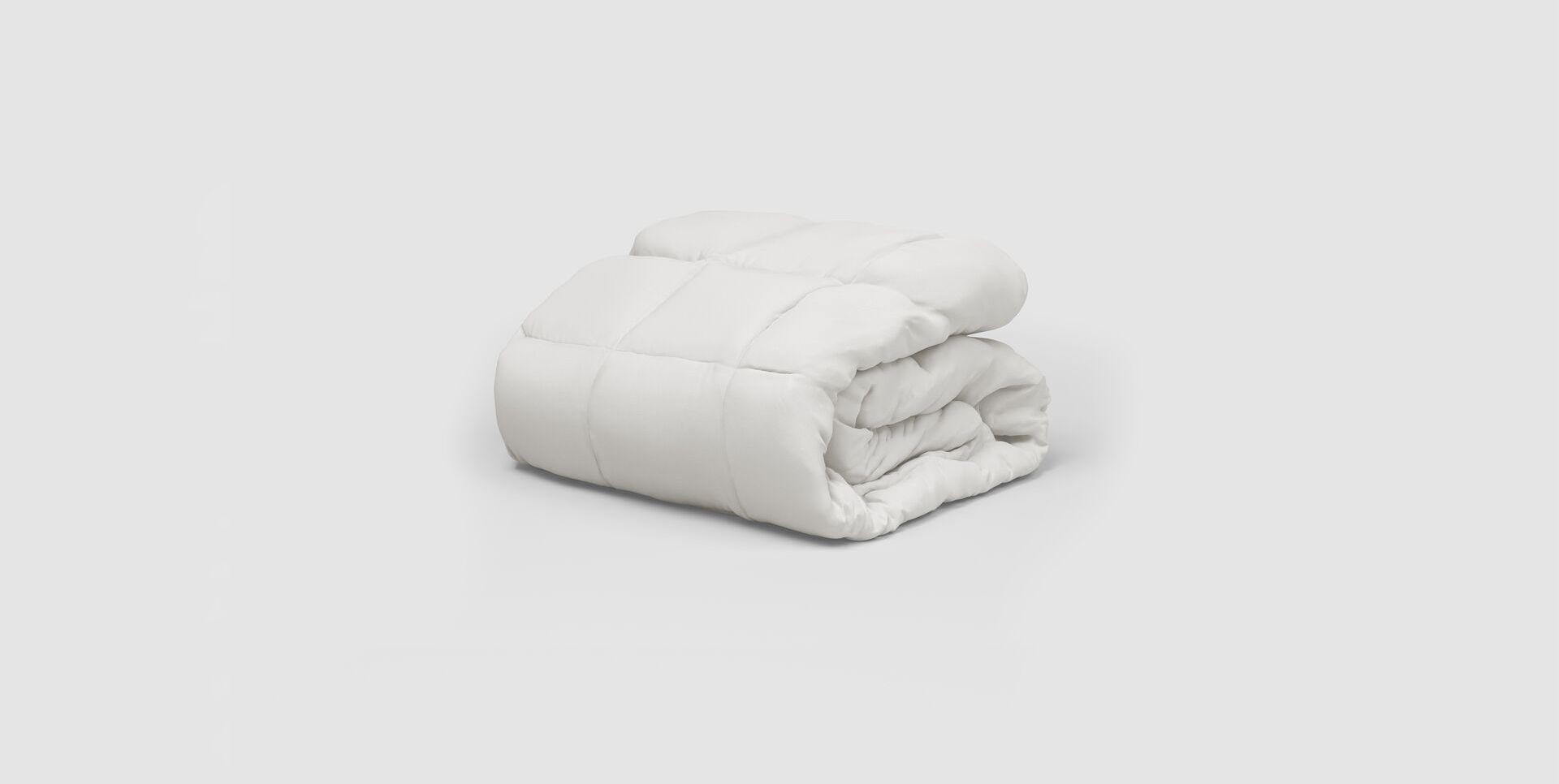
Plush and breathable all-season comforter/duvet insert
and
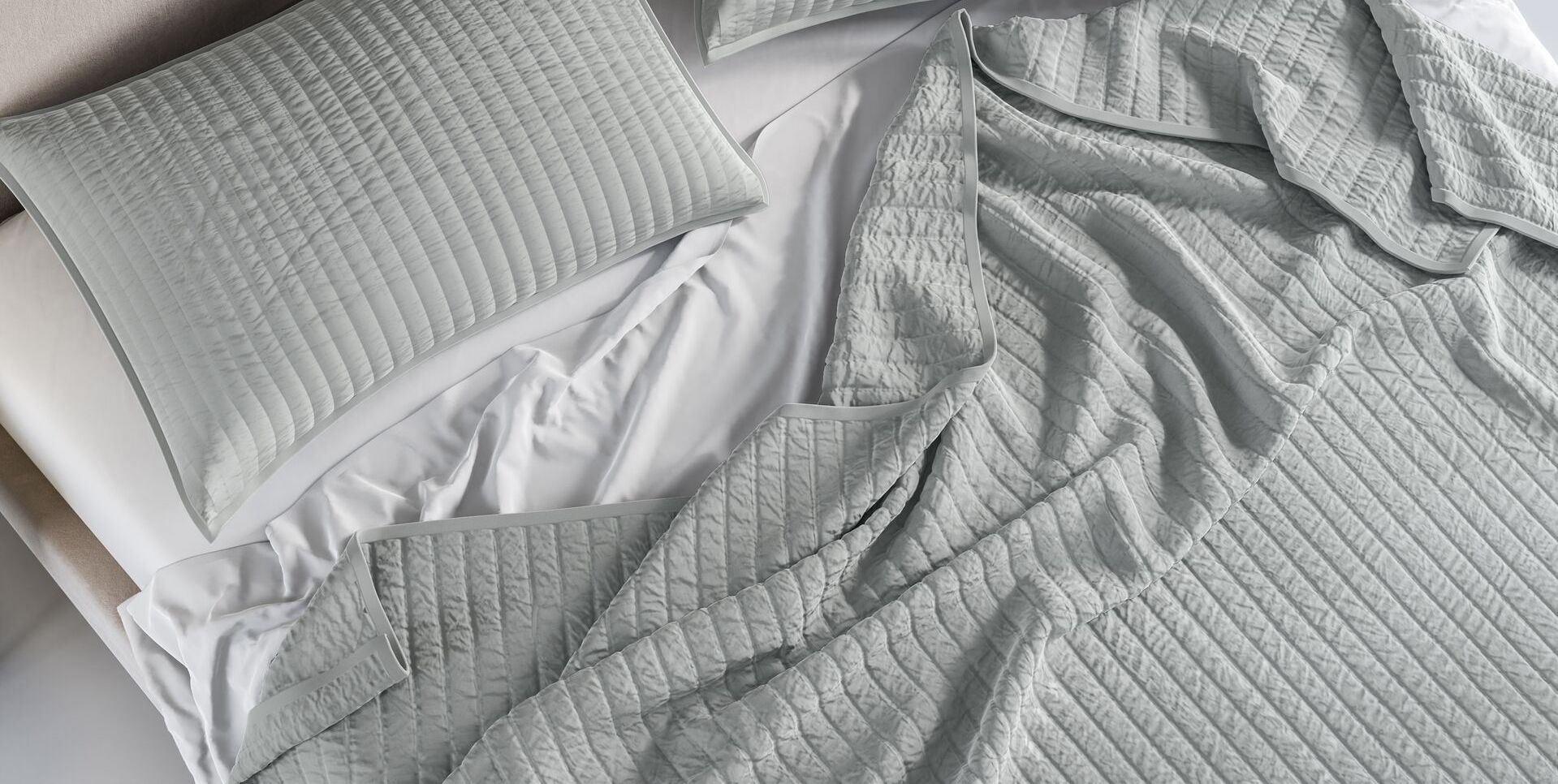
A silky-soft, lightweight quilt with a relaxed yet refined lived-in look
Check out our selection of bedding so you can enjoy comfortable sleep no matter your sleeping habits.

